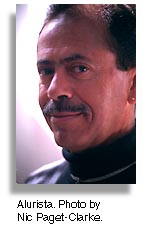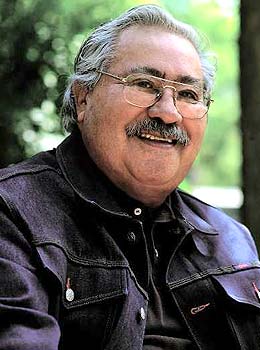Chicano Movement
A significant event took place in Denver during March 1969 when the Crusade for Justice hosted a National Chicano Youth Liberation Conference. The decisions reached in the conference were put in writing in a document entitled ‘El Plan Espiritual de Aztlan’ which was embraced by the attendants as the foundation of their political ideology and which introduced the concept of Aztlan.
Aztlan/Alurista

Alurista is credited as the father of the Chicano movement and as the author of El Plan Espiritual de Aztlan. A chicano is a person of Mexican descent who was raised in the United States. This is someone who does not have a solid nationality. The purpose of the Chicano movement was to unite the Chicanos as a people. In all walks of life, they wanted to be recognized as a new identity. El Plan Espiritual de Aztlan calls for the Chicanos to embrace their Aztec roots. Aztlan is the mythical home of the Nahua people and Alurista used Aztlan as a symbol for a proposed homeland for the hispanic peoples. It is a clear symbol of the mythical history of the people, but it is also a symbol for the people themselves. Aztlan being a mythical place and Chicanos being a people without a home it is apparent that they have no choice but to build a niche for themselves in the present day.
“Brotherhood unites us, and love for our brothers makes us a people whose time has come and who struggles against the foreigner “gabacho” who exploits our riches and destroys our culture. With our heart in our hands and our hands in the soil, we declare the independence of our mestizo nation. We are a bronze people with a bronze culture. Before the world, before all of North America, before all our brothers in the bronze continent, we are a nation, we are a union of free pueblos, we are Aztlán” (El Plan Espiritual de Aztlan).
Alurista is famous for his use of multiple languages in his poetry. Most often they are bilingual with English and Spanish because these are the main languages of the Chicano people, but his poems also draw from Mayan and Nahuatl to express the roots of his people.
ink
(Pa’ Ixel)
ink naught blood u b not willing to spillthink knot rope u b not willing to tiesink nut crack u b not willing to peel
|
Lalo Delgado

Photo: Metropolitan State College
Abelardo Delgado, who used the nickname Lalo, was born in Chihuahua, Mexico and grew up in El Paso, Texas, California, and Colorado. He arrived on the literary scene in 1969 with his ”Chicano: 25 Pieces of a Chicano Mind,” a collection of poems widely read in the Chicano movement, offering vivid descriptions of the injustices suffered by many Mexican-Americans. His most famous poem is entitled “Stupid America” and was published in 1969.
Stupid America
stupid america, see that chicano
with a big knife
on his steady hand
he doesn’t want to knife you
he wants to sit on the bench and carve christfigures
but you won’t let him.
stupid america, hear that chicano
shouting curses on the street
he is a poet without paper and pencil
and since he cannot write
he will explode.
stupid america, remember that chicanito
flunking math and english
he is the picasso
of your western states
but he will die
with one thousand masterpieces
hanging only from his mind.

Leave a Reply